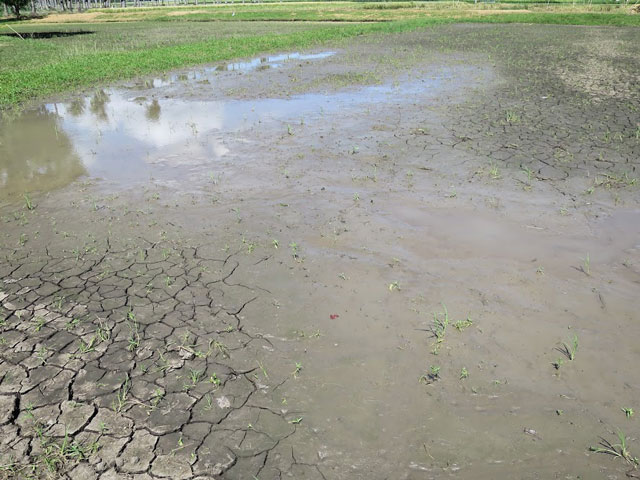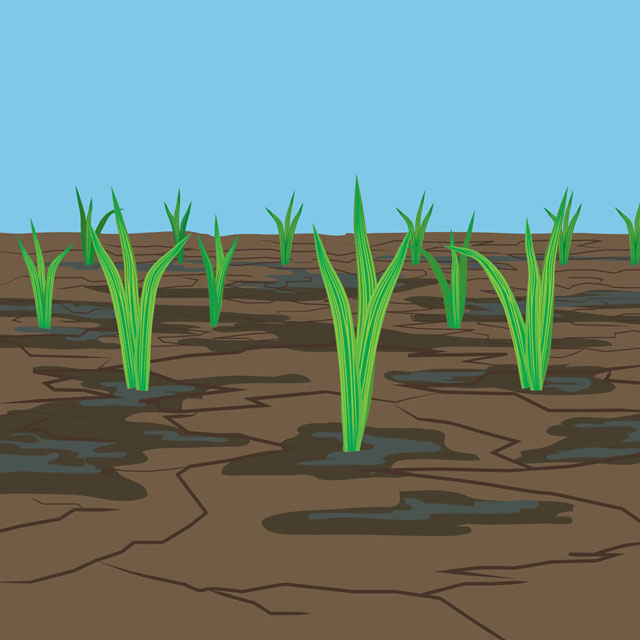Soil crusting
 What it does
What it does
When soil experience crusting, the germinating seeds are unable to break the crust. This also limits oxygen flow into and out of the soil, thus reducing crop growth.
Why and where it occurs
Crusting occurs as the soil dries.
The problem is primarily in dry direct-seeded fields where seed is covered by soil, but may also occur in wet direct seeded fields if the soil dries during crop emergence.
How to identify
Check the field for the following symptoms:
- poor crop emergence in direct-seeded fields
- plants fail to emerge, as they cannot break through the drying soil surface
 The pattern of damage depends on the levelness of the field and the pattern of soil drying across the field.
The pattern of damage depends on the levelness of the field and the pattern of soil drying across the field.
There are various problems affecting crop establishment. These are cloddy soil, seed too deep, soil too soft at seeding, poor emergence in low spots in fields, heavy rainfall at seeding, soil crusting, poor seed quality, low seed rate, water stress, muddy water at seeding, clogged seeder and/or pests such as ants, birds and rats that remove seed at planting.
To confirm cause of problem, check or ask farmer if soil has sealed (has hardened) at the time of crop emergence in direct-seeded field. Also check for plants that have germinated but have not been able to penetrate the soil surface.
Why is it important
Good planting or crop establishment lays the foundation for good yield. Crusting greatly reduces crop stand in direct-seeded fields. Its economic effect is direct due to a reduced plant stand and subsequent yield reduction.
How to manage
- Keep the soil surface moist.
Crusting is primarily important just at the time of crop emergence. If the soil surface can be kept, moist then crusting is unlikely to be a problem.







